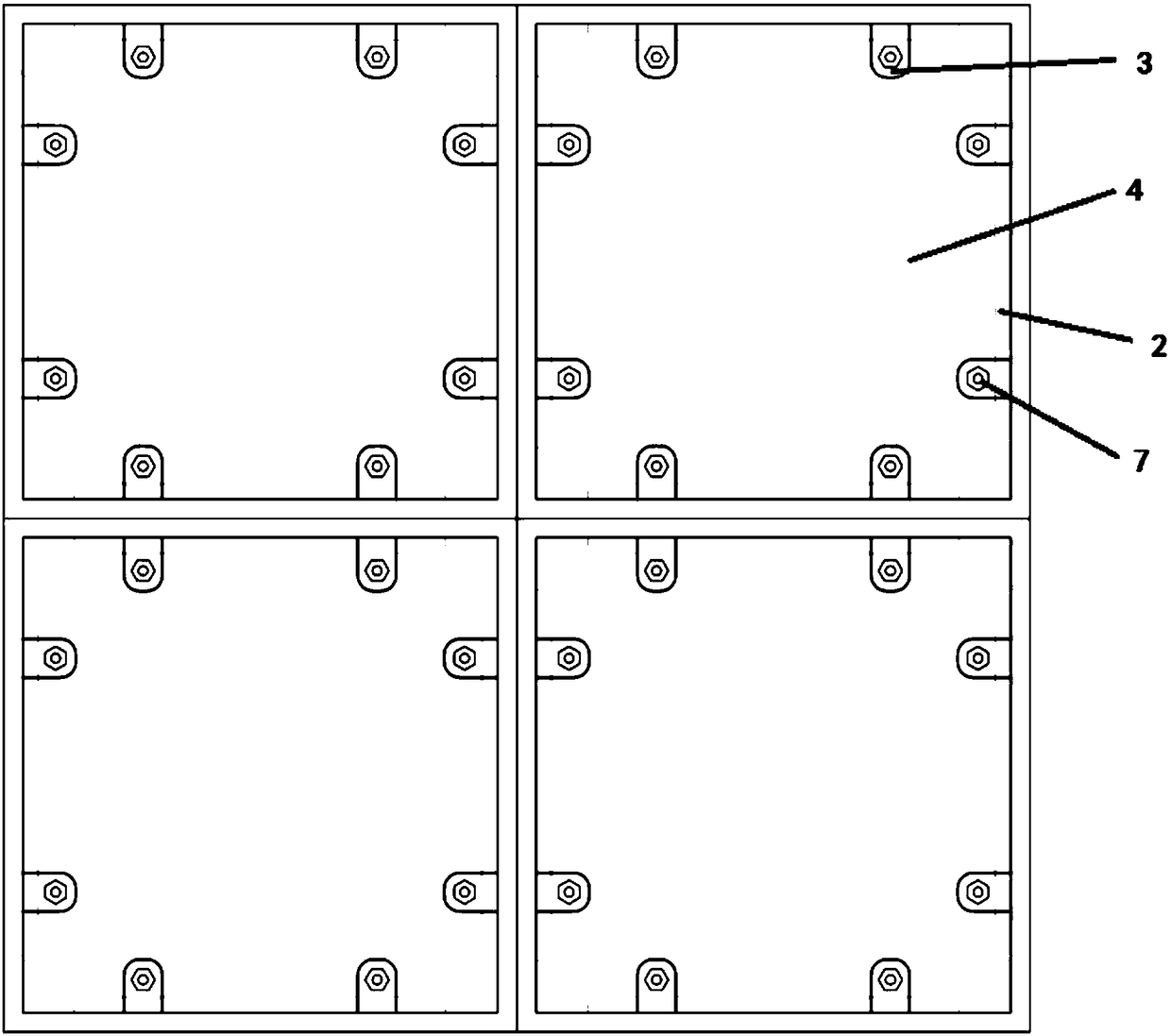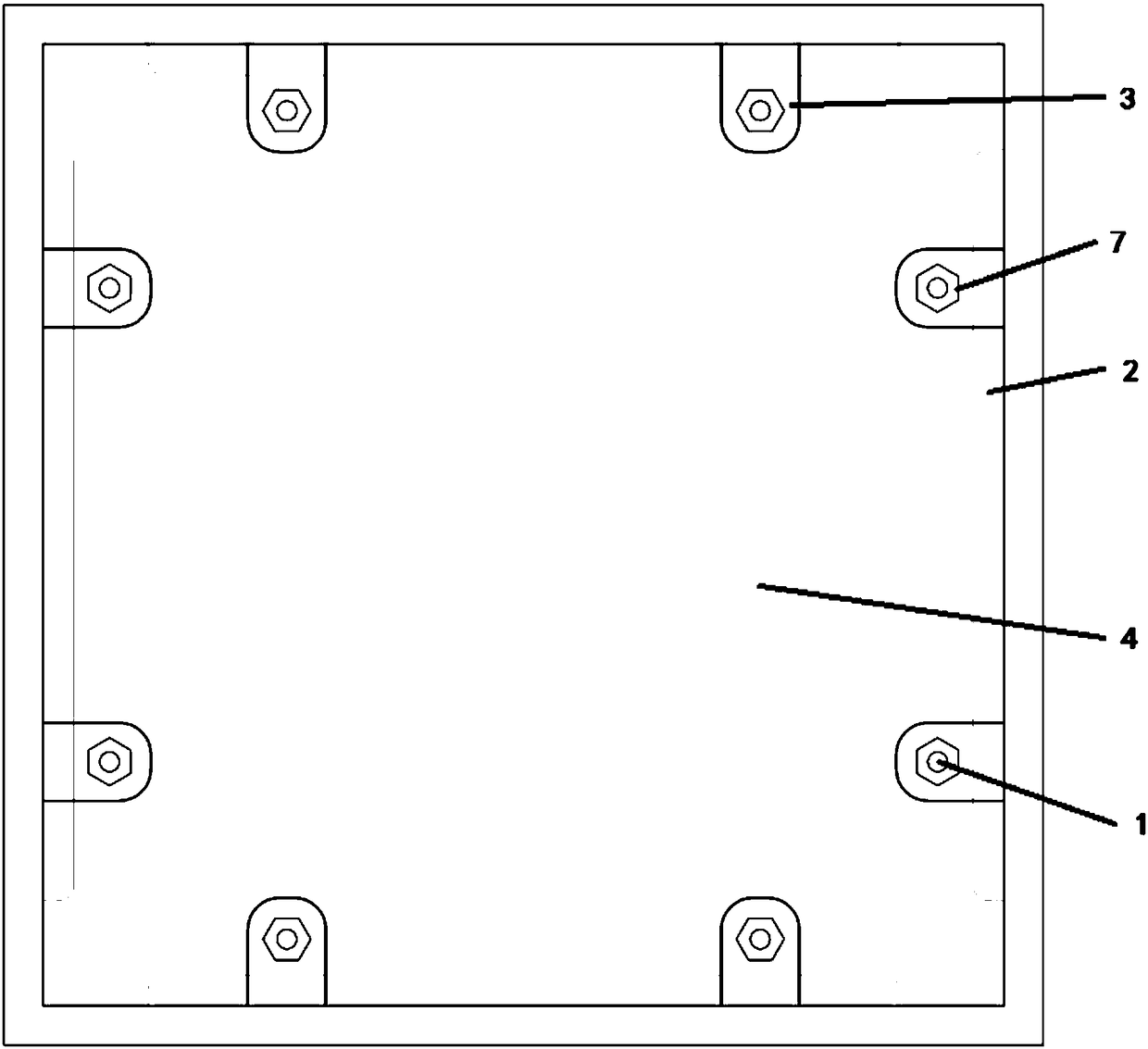Construction method for anti-radon engineering
A construction method and engineering technology, applied to floors, coverings/linings, buildings, etc., to achieve the effects of improving project quality, simplifying leveling, and reducing energy consumption
- Summary
- Abstract
- Description
- Claims
- Application Information
AI Technical Summary
Problems solved by technology
Method used
Image
Examples
Embodiment 1
[0059] A construction method for radon prevention engineering, comprising the following steps:
[0060] Install the anchor bolt 1 on the hole wall or the wall surface, install the buckle bracket 3 on the anchor bolt 1, then fix the buckle bracket 3 on the anchor bolt 1 with the nut 7, and fix the coating plate 4 on the buckle The top of the bracket 3; the coating boards 4 are bonded and sealed with glue 5. The bottom of the coating plate 4 is provided with a groove 8, and the side of the coating plate 4 is provided with a positioning indentation 2 corresponding to the buckle bracket 3, and the buckle bracket 3 is arranged in the groove 8 Inside, the coating plate 4 is clamped on the buckle bracket 3 through the positioning indentation 2 and the groove 8 . Glue 5 is used to bond and seal the coated plate 4 at the positioning dent 2 .
[0061] Wherein, coated plate 4 is prepared by the following method:
[0062] Step 1. Weigh the following components according to mass percent...
Embodiment 2
[0073] A construction method for radon prevention engineering, comprising the following steps:
[0074] Fix the metal frame 6 on the hole wall or the wall, then install the anchor bolt 1 on the metal frame 6, install the buckle bracket 3 on the anchor bolt 1, and then use the nut 7 to fix the buckle bracket 3 on the anchor bolt 1, apply the paint The laminates 4 are fixed on the buckle bracket 3 in a clamping manner; the coating plates 4 are bonded and sealed with glue 5 . The bottom of the coating plate 4 is provided with a groove 8, and the side of the coating plate 4 is provided with a positioning indentation 2 corresponding to the buckle bracket 3, and the buckle bracket 3 is arranged in the groove 8 Inside, the coating plate 4 is clamped on the buckle bracket 3 through the positioning indentation 2 and the groove 8 . Glue 5 is used to bond and seal the coated plate 4 at the positioning dent 2 .
[0075] Wherein, coated plate 4 is prepared by the following method:
[00...
Embodiment 3
[0087] A construction method for radon prevention engineering, comprising the following steps:
[0088] Fix the metal frame 6 on the hole wall or the wall, then install the anchor bolt 1 on the metal frame 6, install the buckle bracket 3 on the anchor bolt 1, and then use the nut 7 to fix the buckle bracket 3 on the anchor bolt 1, apply the paint The laminates 4 are fixed on the buckle bracket 3 in a clamping manner; the coating plates 4 are bonded and sealed with glue 5 . The bottom of the coating plate 4 is provided with a groove 8, and the side of the coating plate 4 is provided with a positioning indentation 2 corresponding to the buckle bracket 3, and the buckle bracket 3 is arranged in the groove 8 Inside, the coating plate 4 is clamped on the buckle bracket 3 through the positioning indentation 2 and the groove 8 . Glue 5 is used to bond and seal the coated plate 4 at the positioning dent 2 .
[0089] Wherein, coated plate 4 is prepared by the following method:
[00...
PUM
| Property | Measurement | Unit |
|---|---|---|
| Thickness | aaaaa | aaaaa |
| Lc50 | aaaaa | aaaaa |
Abstract
Description
Claims
Application Information
 Login to View More
Login to View More - R&D
- Intellectual Property
- Life Sciences
- Materials
- Tech Scout
- Unparalleled Data Quality
- Higher Quality Content
- 60% Fewer Hallucinations
Browse by: Latest US Patents, China's latest patents, Technical Efficacy Thesaurus, Application Domain, Technology Topic, Popular Technical Reports.
© 2025 PatSnap. All rights reserved.Legal|Privacy policy|Modern Slavery Act Transparency Statement|Sitemap|About US| Contact US: help@patsnap.com



